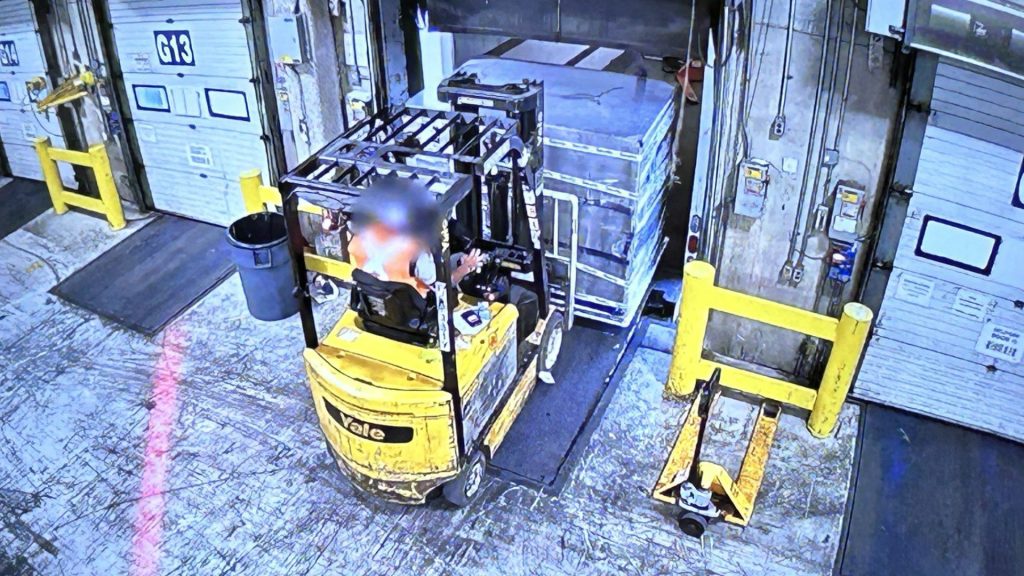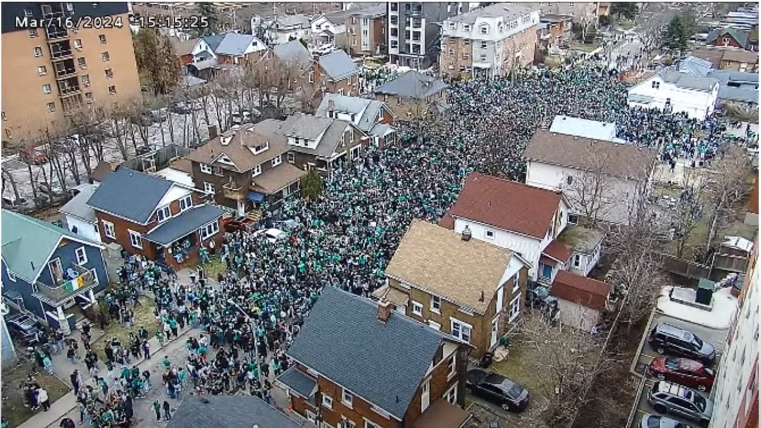Nevada inmate linked to 1984 hammer killings near Denver
Posted Aug 10, 2018 12:26:54 PM.
Last Updated Aug 10, 2018 06:40:42 PM.
This article is more than 5 years old.
AURORA, Colo. – A Nevada inmate previously convicted of attacking a couple with an axe handle in their bedroom is now accused of killing four people with a hammer in two attacks in suburban Denver more than 30 years ago, authorities said Friday.
Law enforcement officials said DNA evidence has tied Alexander Christopher Ewing to the slayings of Patricia Louise Smith, 50, in Lakewood, and three members a family in Aurora in 1984.
A hammer was used to kill Smith, a mother and grandmother who was attacked while eating lunch on Jan. 10, 1984. The weapon was left in her condo.
About a week later, a hammer was used to kill Bruce and Debra Bennett, 27 and 26, and their 7-year-old daughter Melissa at their home in Aurora, about 15 miles from Lakewood. The couple’s 3-year-old daughter, Vanessa, was severely injured.
Ewing has been behind bars in Nevada since the summer of 1984 for a similar attack committed after he escaped while being transported to Kingman, Arizona, where he was accused of attacking a sleeping man with a 25-pound piece of granite.
Colorado officials say Ewing has a criminal history dating back to 1979 with other arrests in Florida and California.
Colorado prosecutors said Friday they were preparing papers to extradite Ewing — a process that could take months — and that the death penalty was a possibility.
Prosecutors filed charges against a John Doe suspect in 2002 in the Bennett slayings, based a DNA profile developed from evidence that was repeatedly tested as technology advanced.
The filing has been updated to include Ewing as the suspect. Charges are also expected to be filed in the Smith case, which is in another jurisdiction, District Attorney Pete Weir said.
Colorado officials learned of a possible DNA match in early July during a routine search of databases. The news “sent a chill through my spine,” said John Camper, director of the Colorado Bureau of Investigation.
The first DNA samples collected from the attack on the Bennett family had been uploaded to an FBI database in 2001, Camper said. In 2010, the Colorado Bureau of Investigation developed a DNA profile in the Smith killing that matched the Bennett case, he said.
In July, under a 2013 state law that allows DNA sampling of inmates, Nevada authorities swabbed the inside of Ewing’s cheek and entered the results in the national database.
District Attorney George Brauchler, whose office is handling the Bennett family case, credited Nevada Attorney General Adam Laxalt for pushing for retroactive testing of inmates under that law for helping identify Ewing as a suspect. Colorado also requires DNA sampling of inmates.
Nevada court records show a jury found Ewing, under the name Alex C. Ewing, was guilty of escaping from the custody of two Arizona deputies at a gas station in Henderson, Nevada, on Aug. 9, 1984. He entered an unlocked home and severely beat a woman and her husband with an axe handle in their bedroom, the records say.
Ewing, then 23, was arrested two days later by park rangers at Lake Mead.
The Colorado killings followed two other non-fatal attacks near Denver that authorities suspected involved a hammer. Authorities said those investigations remain active but declined to speculate if they were related to the Smith and Bennett slayings.
After the DNA match, Ewing told Colorado investigators in two interviews that he lived in the Denver area in 1984 and did various construction jobs, including plumbing, according to court documents.
When Ewing was shown a photo of Smith from the murder scene, he “jumped back in his chair” and stared at it, the documents state.
“Alex Ewing appeared shocked and when confronted about his DNA being found at the scene of the murder, he said, ‘There’s got to be a mistake,’ and provided no explanation of how his DNA may have been at the scene,” Detective Clayton Fuller wrote in an arrest affidavit in the case.
In a statement, the Smith family said they were relieved that the suspect has been behind bars for most of the time since Patricia Smith was killed.
“It is difficult to imagine how much more fulfilling our lives would have been if Patricia Smith’s life had not been taken from us. It’s more difficult to imagine her death remaining a mystery,” the family said.
Vanessa Burnett, the sole survivor of the Aurora attack, told KUSA-TV on Thursday that she remembers little about it. Now 38, she’s scarred, with a metal plate in her forehead. She endured operations, physical therapy and anger issues growing up.
“I was made fun of in school because my parents were killed,” she said. “I was made fun of because the hammer man or whatever you want to call it was going to come to my house and hurt everybody when I had slumber parties and stuff.”
___
AP writer Ken Ritter in Las Vegas contributed to this report.










